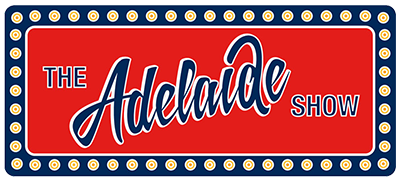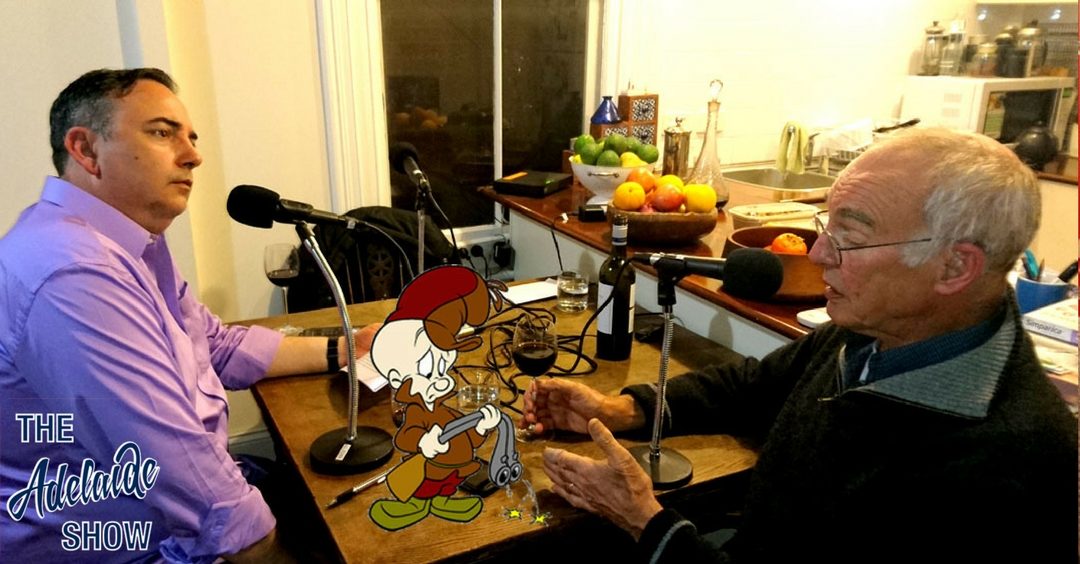This week, Steve and Michael hop along to Bruce Munday’s place to learn how “those wild rabbits” have thumped their way through Australia’s history. We hear about good intentions, cute furriness, very effective teeth and claws, the trail of damage to this land and its native species, and finally a turning of the tables as we begin to win. Bruce’s book, Those Wild Rabbits, is out now through Wakefield Press.
This week, the SA Drink Of The Week is from Coriole Wines
Michael will try to stump us, virtually, with IS IT NEWS on the topic of rabbits.
In 100 Weeks Ago we hear from Samela Harris, lover of penguins and many native animals.
And in the musical pilgrimage … our musical curator has dusted off a fantastic song we played a few years ago because it was the most perfect song for tonight; house rabbit blues.
Suggested Tweet text: Laugh, cry & learn about Those Wild #Rabbits in #Australia. Meet @WakefiedPress #author Bruce Munday #AgChatOz
And please consider becoming part of our podcast by joining our Inner Circle. It’s an email list. Join it and you might get an email on a Sunday or Monday seeking question ideas, guest ideas and requests for other bits of feedback about YOUR podcast, The Adelaide Show. Email us directly and we’ll add you to the list: [email protected]
If you enjoy the show, please leave us a 5-star review in iTunes or other podcast sites, or buy some great merch from our Red Bubble store – The Adelaide Show Shop. We’d greatly appreciate it.
Running Sheet: Those Wild Rabbits
| TIME | SEGMENT |
| 00:00:00 | Outtake |
| Rabbits live in dry stone walls | |
| 00:00:19 |
Theme |
| Theme and Introduction. Our original theme song in full is here, Adelaidey-hoo. | |
| 00:02:29 | SA Drink Of The Week |
| 2012 Coriole Sangiovese Shiraz … tasting notes coming Sunday | |
| 00:07:09 | Stories Without Notice |
| Listener survey underway. Go to theadelaideshow.com.au/survey | |
| 00:07:47 | Bruce Munday |
|
Bruce Munday is one of Australia’s revered voices in the Landcare movement. Having worked the land but also having inspired bands of volunteers to learn more about caring for the soil, he has become known as a man who can dive deeply into important historical subjects so that unlike the African proverb, when he finally dies, a large library will not burn with him. He has a fascinating book about dry stone fences already in circulation but tonight we are talking about his latest book, Those Wild Rabbits, all about the history of Australia’s love affair with and battle against this furry pest. I liked David Williamson’s comments in your book in which he sums up our story about rabbits in Australia the longest war in human history in which we’ve fought desperate battles, usually on the wrong battlefields with the wrong weapons. Is that a fair summary? I like one of your first reflections in the book, about Europeans bringing what they knew – rabbits, goats, pigs, horses, donkeys, cats, and dogs, all of which have gone feral in this land, when you say, in 1788 “the concept of biosecurity – protection against invasion by alien species – was more than a mystery, it simply didn’t exist.” You mention these items were memories of home. And yet, today, we encourage migrants to not only mix and integrate but also to bring their best. If we had this time over again, would there be some items or customs from the old country worthy and safe to introduce? The rabbit was considered an innocent animal providing food. But you describe it as an evil villain here: rabbits have bad habits wherever they are found. Sharp chisel-like teeth enable grazing close to the ground often to the detriment of grasses and herbs; not content with that they will also browse bark and leaves from shrubs and tree seedlings. Sharp nails make for efficient burrowing, often causing soil erosion and undermining, and when desperate they eat roots and climb trees for foliage. Add to this a high level of fertility and fecundity and you have Tell us about Thomas Austin and Barwon Park. Why was 1859 a turning point? Tell us about South Australia’s involvement. We note that it was the fear of shipwreck that started a practice of leaving rabbits on islands, including those around Port LIncoln, as a food source. Beyond the shores the ever-present danger of shipwreck encouraged A fortunate exception to the rabbit colonisation of islands was Kangaroo Island. It didn’t dodge feral animals altogether, but it dodged rabbits? Notwithstanding feral pigs, peacocks, turkeys, deer and A female can produce 38 surviving young in a breeding season, resulting in a still-formidable 15,000 rabbits after three years Are farmers too complacent today? There is mention of a plague before myxomatosis arrived in the 50s How have we fought back with science? Wasn’t there a new attack in the war recently? If we are too good with RHDV, it will kill its host (the rabbit) before it can mutate into different strains. There is conflict in the outback where rabbits have replaced native prey. What is the status of that balance at the moment? HOPE. At Tungkillo, there is a patch of turf where the war is being won. Tell us about its consequences. Bilby vs Bunny, who should win the beauty contest, especially in the context of Stephanie Pappas’ quest to get imput on what is the cutest creature (seven essential ingredients of cuteness, in order: big eyes, youth, tininess, fur, mammal, smiling and domestication). When an old man dies, a library burns to the ground Can you tell us what the key is to dry stone fences staying put AND where we might see some in South Australia? |
|
| 01:24:12 | Is It News? |
|
Michael challenges the panel to pick the fake story from three stories from South Australia’s past. Naracoorte Herald, Tuesday 17 April 1883
|
|
| 01:38:37 | 100 Weeks Ago |
| In 100 Weeks Ago we hear from journalism stalwart, Samela Harris. who has had a lifetime love affair with pelicans. In this snippet, she talks about her enchantment that she now shares with partner in a property near Victor Harbor. | |
| 01:46:53 | Musical Pilgrimage |
| And our song this week is House Rabbit Blues by Ben Searcy, selected by our musical curator Dan Drummond. | |
| 02:00:32 | Outtake |
| Michael is hard to look at … I listened to your podcast … my wife won’t be a pest … it will get worse, Steve | |
Here is this week’s preview video:
SFX: Throughout the podcast we use free sfx from freesfx.co.uk for the harp, the visa stamp, the silent movie music, the stylus, the radio signal sfx, the wine pouring and cork pulling sfx, and the swooshes around Siri.
Save
Save


2 Responses
Chatting with Steve and Michael was heaps of fun. Hope that comes through in the podcast. Great to ‘work’ with people who are so positive about Adelaide.
And, likewise, Bruce. Your deep-rooted interest in our country and its people, is noteworthy. We could have talked all night! Steve